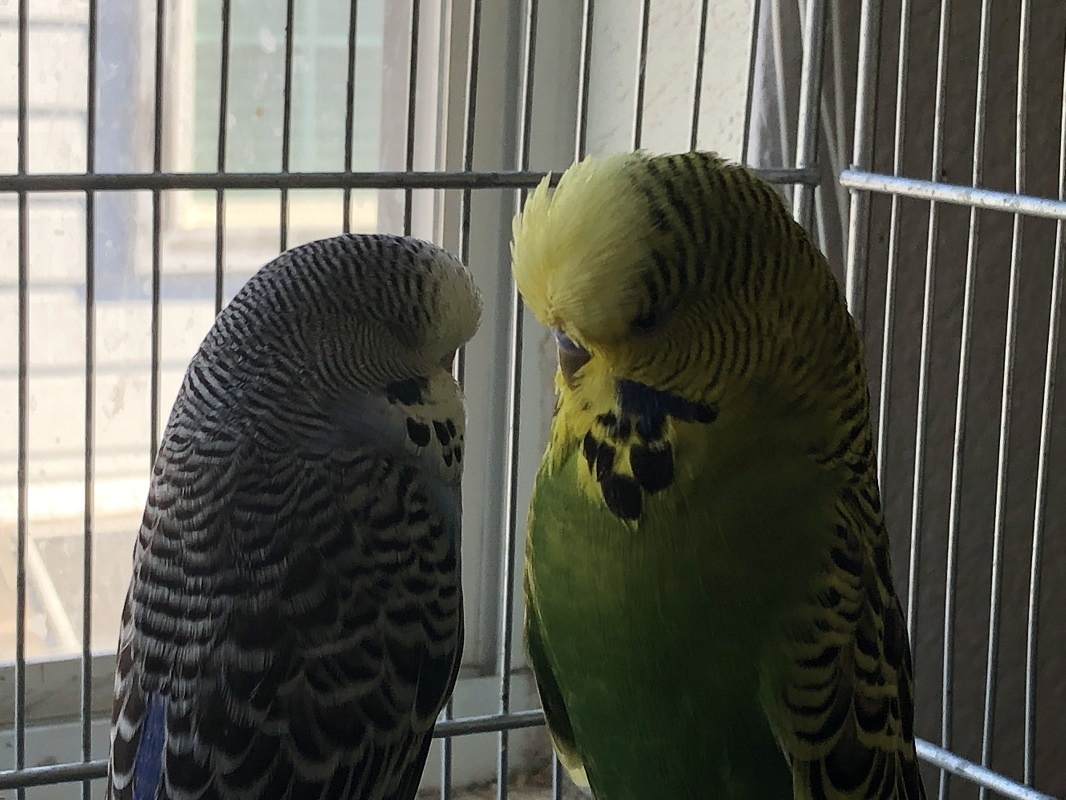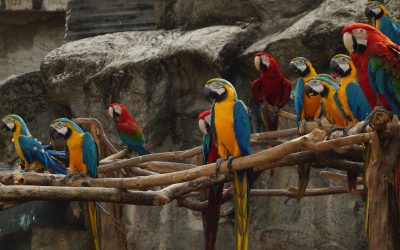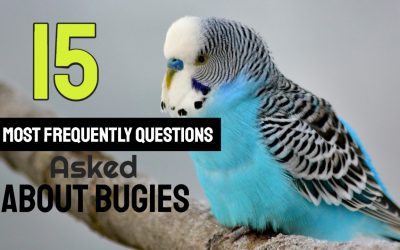What is budgerigar? | Facts About Budgerigar aka Budgie
Budgerigar Name:
The name, budgerigar came from the root word “budgery” which means good bird. Budgerigars have a reputation for being small but incredible. Its vibrant appearance goes along with its enthusiastic attitude, and that’s what kept these birds unique throughout the ages.



Aside from its attractive and beautiful array of colors and mutations, just like other birds, budgies also have an outgoing personality and they are very inquisitive in nature. They are very fond of playing and hanging around people and they love to yawn, which you may find yourself doing too, if you saw them do it. They are a type of parakeets that are classified under the genus of Melo Psittacus; these birds are scientifically known as Melo Psittacus Undulates.
Later in this series of articles, you will learn more about the different colors and mutations of Budgerigar parrots so that you can choose what is best for you. Budgerigars are great as pets, though sometimes some people may find its attitude naughty because of its natural curiosity and could be way interactive at times, but that’s of course, part of who they are. Budgerigar are clever and can be easily trained and they can sing as well. Although, Budgerigars are generally easy to care for because of its small size, you will still need some useful tips, so that you can maximize its true potential. Compare to other bird species, Budgerigar parrots doesn’t live for 50 years or more. These birds have an average lifespan of only 15 – 20 years. But, if you take good care of them, they will certainly live longer than you might expect.
Budgies are friendly and charming companions, and because of that you need some guidance on how to take care of them, raise them and possibly learn how to be like them as well as teach them to be like you. This ultimate guide will teach you on how to be the best Budgerigar owner you can be. Inside this series, you will find tons of helpful information about Budgerigar Parrots: how they live, how to deal with them and realize the great benefits of owning one.
Facts about Budgerigars:
Budgerigars, which are scientifically under the Subfamily of Loraine, are birds that are native to the wild and drier parts Australia. Budgerigar’s life expectancy is about 15 – 20 years or more. They are relatively small parakeets with an enthusiastic, sociable attitude towards people, which makes them an interesting choice as pets.
These parrots had been popular since the 19th century especially when scientists brought it to Europe. In the wild, Budgies are miniature birds with variety of colorful feathers such as green with yellow, with black stripes and markings, and dark blue-green-black flight and tail feathers, and because of color mutations they now come in an array of different jelly bean colors like yellow, white, violet, gray, sky blue, cobalt, mauve except red and pink. Aside from talking, they are also fond of chewing, napping and playing interesting games to keep them from being bored and also to satisfy their curious minds.
Most Budgerigars are generally easy to train and can be well behaved if you provide them with adequate attention, interaction, and love. They can easily become part of the family and a loving companion if you are willing to put in the time and effort to take care of them. Budgerigars can be quite tricky to differentiate because they have very similar appearance to the other parakeets. They display small, iridescent blue-violet cheek patches, with a light green body color. Their wings have greenish-black flight feathers and their beaks do not protrude much. Their average size including tails is about 7 inches long, with a wingspan of about 10 – 14 inches, and weighs 30 – 40 grams. It has an average lifespan of 15 – 20 years. The maximum recorded lifespan of a budgie is 26 years although sometimes, it only lives for a minimum of 5 – 10 years.
In terms of their behavior and personality, they are quite notorious for having sharp screeching noise and bold attitude in everything. They will destroy and chew on any objects available, requires lots of interaction and at times nippy to unfamiliar faces. But they are primarily easy to tame and very friendly once they get to know you. These parrots are omnivorous and usually feed on seeds, insects, fruit and nuts. Budgerigars are sexually dimorphic; female budgies have white or light-blue, tan, or brown cere (head) while males commonly have blue or purplish-blue cere except for color mutated species.
In terms of reproduction, Budgerigars reach their sexual maturity as early as 6 months old and breeding period usually occurs between June and September; female’s clutch size ranges from an average of 4 – 6 eggs and incubation last for about 18 – 21 days. Just like any parrots, Budgerigars can be trained to mimic human speech and imitate other sounds by using their bifurcated trachea, which are equivalent to vocal cords in humans. Male budgies are usually the one who sings especially when courting.
Quick Facts About Budgerigars aka Budgies:
Taxonomy: phylum Chordata, class Aves, order Psittaciformes, family Psittaculidae, Subfamily
Loriinae, Tribe Melopsittacini
Distribution: Australia
Habitat: Scrublands, Woodlands, Grasslands
Lifestyle: Flock Oriented
Breeding Season: Between June to September Eggs: 4 – 6 eggs
Incubation Period: 18 – 21 days
Sexual Maturity: 6 – 7 months old
Average Size: 18 cm (7 inches)
Average Weight: 30 – 40 grams
Wingspan: 25 – 36 cm (10 – 14 inches)
Coloration: (in the wild) yellow, white, violet, gray, sky blue, cobalt, mauve; over 100 color mutations
Sexual Dimorphism: Sexually dimorphic
Diet: Seeds, Insects, Fruit, Nuts (Omnivore)
Sounds: Vocal Communicator
Interaction: Highly Social
Lifespan: 15 – 20 years
Budgerigars in History:
Budgies are native to Australia, and the first humans who encountered them over thousands of years ago were most likely the aborigines of that land.
In 1805, an English zoologist and botanist named George Shaw made the first ever recorded description of the budgerigar.
In 1840, an English ornithologist named John Gould, brought to Europe the first budgerigar, where it was admired by a lot of European bird enthusiasts and just a decade later, during the 1850s the first captive breeding began.
In 1870’s, the first recorded color variation was made, and a wide variety of color mutated budgies followed shortly thereafter. During the 20th century, the budgerigar’s popularity as a family pet rose dramatically and began importation in United States, South America and Asia. Today, the bird continues to be a very popular pet because it’s very low maintenance, perfect for families with children and a very gorgeous cute companion that you can count on.
I hope you liked my first article about budgerigars. If you have any questions or want to share some thoughts about this article, please let me know in comment section.
Next article will be about Color Mutations of Budgerigars.
Do you have companion birds?
Don’t forget to say hello to our birds!!!
Everything you need to now about cockatiel diet
The health and vitality of your Cockatiel depends entirely on the right kind of diet.The perfect diet not only means the right amount but also the right combination ofthe essential nutrients required by your Cockatiel. We need to be even morecareful about the...
13 Fun Facts About Macaws | Bird and Beyond
1. Macaws Can Live More Than 80 YearsMacaws live to be around 60 years in the wild on average, and in some cases this can extend for up to 80 years and even as long as 100 years. When kept as pets, macaws are often known for outliving their owners! In the wild, their...
15 Most Frequently Asked Questions about Budgies
15Frequently Asked Questions.Here are some most common questions about bugies. When people refer to an "English" budgie they are generally talking about a budgie that is significantly bigger than the wild Australian budgerigar and with characteristics and features...




0 Comments